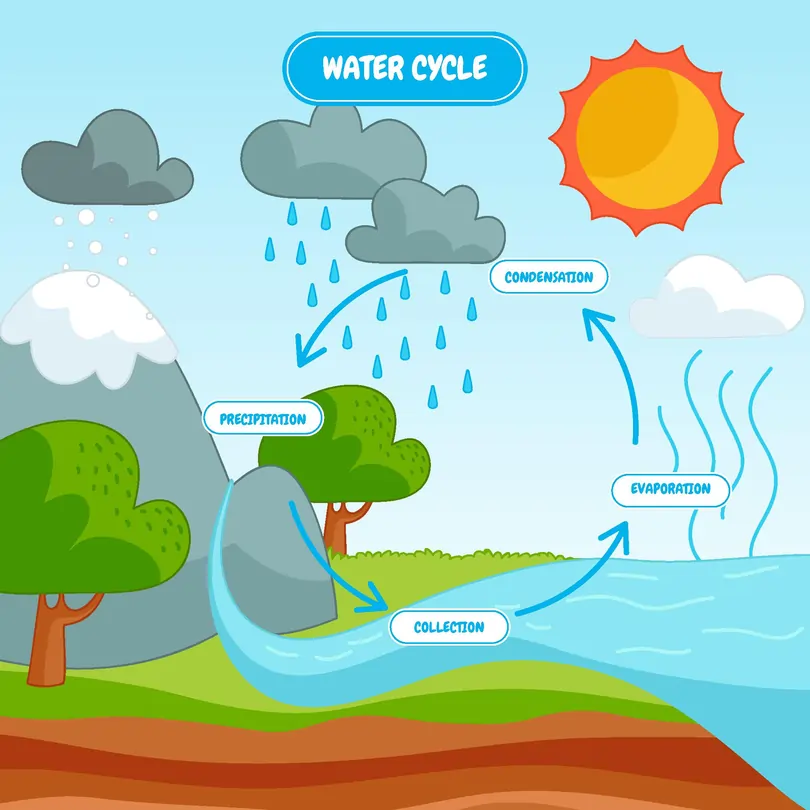Fungal life cycles: A kaleidoscope of diversity

In the fascinating realm of biology, one of the most intriguing and diverse groups of organisms is fungi. These remarkable life forms are essential to our ecosystem, playing vital roles in decomposition, medicine, and food production. To truly understand fungi, it's crucial to delve into their life cycle, which is a complex and intriguing process.
In this article, we will explore the world of fungi and uncover the mysteries behind their life cycle.
What is fungi?
Fungi, a kingdom separate from plants and animals, are incredibly diverse and adaptable organisms. To learn about their life cycle, we need to start by understanding their structure, classification, and the key phases in their life.
The world of fungi
Before we dive into the life cycle of fungi, it's essential to know what fungi are and the various types they come in.
Fungi include mushrooms, moulds, and yeasts. They can be found in a variety of ecosystems worldwide.
Fungal structure and classification
Fungal anatomy
To understand the life cycle, we must first explore the structure of fungi. Fungi consist of various parts, including the hyphae, mycelium, and spore-producing structures. These components are essential for their survival and reproduction.
Classification of fungi
Fungi are classified into various groups based on their reproductive structures and methods. Some of the most well-known classes include Zygomycota, Ascomycota, Basidiomycota, and Deuteromycota. Understanding this classification helps in deciphering their life cycle.
Influence of environmental factors
Fungi are highly influenced by environmental conditions, such as temperature and humidity. These factors play a crucial role in determining when and how fungi reproduce.
Different types of fungal life cycle
Asexual reproduction
Asexual reproduction is a fundamental component of many fungal life cycles. This mechanism allows fungi to rapidly produce offspring without the genetic recombination associated with sexual reproduction. Conidia, sporangia, and conidiophores are just a few of the structures involved in asexual reproduction. Each fungal group has its unique methods, showcasing the diversity within this category.
Step 1: Spore formation
The first step in asexual reproduction involves the formation of spores through mitosis. Spores serve as the primary means of dispersal for fungi.
Step 2: Germination
Upon release, spores land in suitable environments and germinate, forming hyphae that grow into mycelium.
Step 3: Mycelium growth
Mycelium, the vegetative part of the fungus, continues to grow and spread, exploiting the resources in its environment.
Step 4: Asexual spore production
Under favourable conditions, mycelium develops specialised structures, such as conidia, sporangia, or conidiophores, which produce asexual spores.
Sexual reproduction
The complex world of sexual reproduction in fungi involves a myriad of processes. In Ascomycota, sexual reproduction occurs within a specialised structure called the ascus, where nuclei fuse to produce ascospores. Basidiomycota, on the other hand, employ complex structures known as basidia, which produce basidiospores. The intricacies of sexual reproduction in fungi are indeed captivating.
Heterothallic and homothallic fungi
Some fungi are heterothallic, requiring two different mating types to reproduce sexually, while others are homothallic, possessing both mating types within the same organism. This diversity in mating systems affects the fungal life cycle and ensures reproductive success in a range of ecological niches.
Heterothallic Reproduction
- Step 1: Mating types
- Fungi with one mating type must locate a different mating type to initiate sexual reproduction.
- Step 2: Plasmogamy
- Upon encountering a different mating type, plasmogamy occurs, leading to the fusion of their cytoplasm.
- Step 3: Heterokaryotic stage
- Heterokaryotic cells, with nuclei from both mating types, are formed.
- Step 4: Karyogamy
- Karyogamy fuses the nuclei, creating diploid cells and initiating the formation of spores.
Homothallic Reproduction
- Step 1: Self-Fertilization
- Fungi with both mating types can self-fertilize, eliminating the need to find a compatible partner.
- Step 2: Plasmogamy
- Plasmogamy occurs, leading to the fusion of their own cytoplasm.
- Step 3: Heterokaryotic Stage
- The fused cells enter the heterokaryotic stage, where nuclei from both mating types coexist.
- Step 4: Karyogamy
- Karyogamy takes place, initiating the formation of spores.
Polycyclic and monocyclic life cycles
Within fungal life cycles, one can discern the presence of both polycyclic and monocyclic strategies. Polycyclic fungi undergo multiple rounds of reproduction within a single growing season, whereas monocyclic fungi complete their life cycle in one reproductive cycle. These adaptations are finely tuned to the ecological contexts in which these fungi thrive.
Polycyclic Life Cycles
-
Step 1: Initial Reproduction
- The fungal life cycle begins with initial reproduction, resulting in the formation of primary spores.
-
Step 2: Secondary Reproduction
- After a period of growth and favourable conditions, secondary spores are produced, allowing for additional rounds of reproduction.
-
Step 3: Tertiary Reproduction
- In the same growing season, tertiary spores may be generated, furthering the reproductive process.
Monocyclic Life Cycles
-
Step 1: Single Reproductive Phase
- Monocyclic fungi complete their life cycle in one reproductive phase, producing all necessary spores for dispersal in a single reproductive event.
Ecological influences
Symbiotic relationships
Mycorrhizal fungi engage in symbiotic relationships with plants, forming mycorrhizae, which enhance nutrient exchange. This symbiosis plays a pivotal role in ecosystems and illustrates how the fungal life cycle can be adapted for mutualistic associations.
Parasitic fungi
Parasitic fungi have evolved intricate life cycles tailored for exploiting host organisms. Understanding these life cycles is essential for managing plant diseases caused by pathogenic fungi.
Applications and importance of fungi
Medicinal uses
Fungi are used in the pharmaceutical industry for producing antibiotics and other drugs. Understanding their life cycle is essential for optimising their cultivation.
Food production
Fungi like yeast are vital for baking and brewing. Knowledge of their life cycle is crucial for food production processes.
Ecosystem role
In the ecosystem, fungi play a significant role in decomposition. Understanding their life cycle helps in comprehending their ecological importance.
To conclude, the fungal kingdom is a mosaic of life cycle adaptations, each finely tuned to the demands of its ecological niche. From asexual and sexual reproduction to heterothallism and homothallism, and polycyclic and monocyclic strategies, fungi exhibit an astounding array of life cycle variations. These adaptations allow fungi to thrive in diverse environments, serving critical roles in ecosystems and providing essential contributions to science, medicine, and agriculture.


 SG
SG  VN
VN 


















